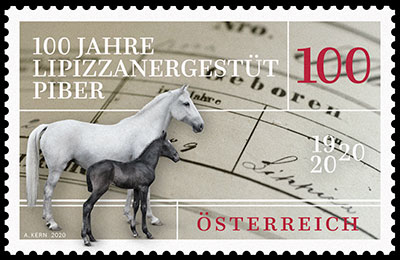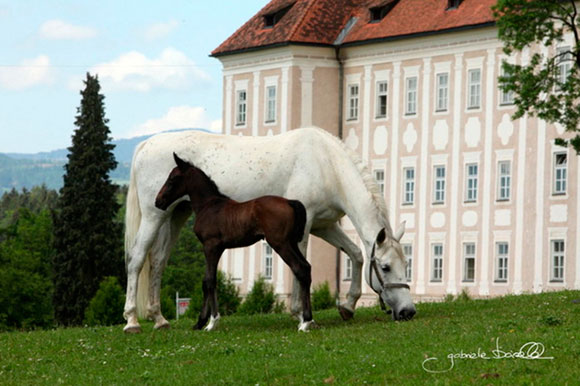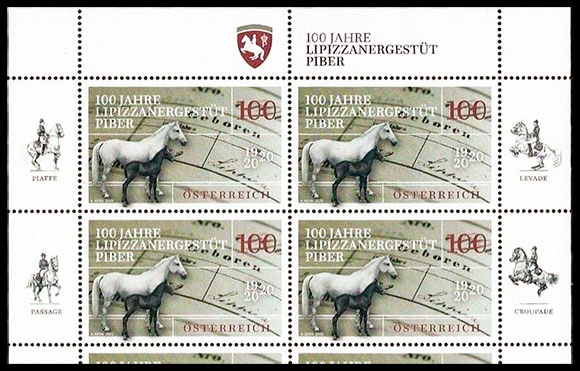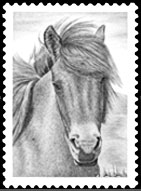
On July 4, 2020, the Austrian Post issued a stamp for the centenary of the Lipizzaner Piber stud farm.
A hundred years ago, in 1920, the world famous Lipizzan horses found a new home at the Piber stud farm in western Styria.
The history of the Lipizzan breed begins in 1580, when Archduke Charles II founded a court stud farm near Lipica (the territory of modern Slovenia, formerly part of the Austro-Hungarian Empire). In Lipica, horses from Spain were bred, which were later crossed with Arab and Kladruby horses. This led to the emergence of the Lipizzan horse, which is now considered one of the oldest cultivated breeds in Europe.
For hundreds of years, up to 1916, these beautiful horses were bred in Lipica. Fundamental changes took place during and after the First World War: Lippitz went to Italy, some of the livestock remained there, and some were evacuated to Styria in the town of Piber, 40 km from Graz. It was there that the cultivation of the Austrian branch of the Lipizzans continued. Nowadays, about 40 foals are born annually at the plant in Piber. The pedigree of each foal can be traced back to the 18th century, all descended from 6 stud stallions along 17 pedigrees.

Lipizzans are baroque horses of medium height, powerful but elegant, with a bushy tail and mane, and strong, sturdy legs. The Lipizzan breed is closely related to the history of the Spanish Riding School in Vienna. In the beautiful arena of the Hofburg, Lipizzans today, as they did many years ago, demonstrate their extraordinary strength, endurance and graceful beauty at the performances of the higher school of riding. The Spanish Riding School in Vienna is the only institution in the world that has continuously maintained the traditions of classical dressage for over 450 years, and only Lipizzan horses have been performing at the school's main arena.
Artist Anita Kern has placed a white Lipizzan mare with a dark gray foal at her feet on a postage stamp. This is one of the distinctive features of the breed: all foals are born dark: bay or dark gray, but gradually they brighten, turning into snow-white beauties by the age of 6-10. By the way, this is a rare case when a brand can be considered a personalized one, it depicts very specific horses: the mare Trieste and the foal Maestoso Triesta. A fragment of a page of an old handwritten studbook serves as a background for the stamp.

The stamps were issued in mini sheets of 10 stamps (2 x 5). The margins of the small sheet are decorated with drawings by the artist Ludwig Koch depicting figures from the high school of riding. The presentation of the postage stamp took place on 4 July 2020 at the arena of the Winter Riding School in the Hofburg. The ceremony was attended by the representative of the Austrian post office Stefan Nemeth and the school rider Marius Schreiner.

foto: SPS / Boiselle
Перейти в каталог


